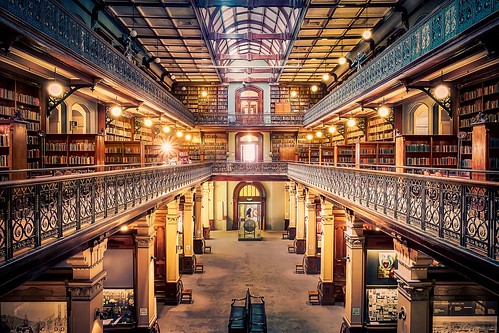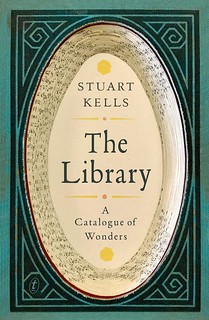
PREV ARTICLE
NEXT ARTICLE
FULL ISSUE
PREV FULL ISSUE
NEW BOOK: THE LIBRARY: A CATALOGUE OF WONDERS
For bibliophiles, here's a Guardian article (forwarded by Len Augsburger) by author Stuart Kells who's just written a book about libraries. Here's an excerpt.
-Editor

I recently had the privilege of circling the world to write a book about libraries. My timing was excellent: after a short-lived e-books scare, physical books are back in fashion, and libraries are the place to be. My trip was not unlike the pilgrimages made by 18th-century library tourists. On my journey I noticed two trends that are changing how we think of old books and old libraries. The first is a stronger focus on provenance research. Through whose hands have the books passed? How did those handlers use and mark and protect their books? This branch of bibliography is helping to humanise it. The other trend involves breaking away from traditional ideas of what constitutes a meritorious book, and from the traditional oppositions of high and low literature. Thanks to this, pulp novels – featuring what Allen Lane called “bosoms and bottoms” cover art – have infiltrated rare book collections. Crime pulps and sci-fi paperbacks are now prized by such hallowed institutions as the Smithsonian, the Houghton and the British Library. The history of libraries is rich with metaphors of books as lovers, prisoners, weapons, potions and creatures. It is also rich with real, non-metaphorical creatures. Much is known about the ecosystems and biodiversity of libraries. Library fauna such as bookworms, bedbugs and microbats have long been the subject of study. But a little-known subfield concentrates on the human biology of libraries. When Sylvia Plath vengefully incinerated Ted Hughes's personal papers, she sprinkled in his dandruff and fingernail cuttings. The Australian bookbinder and bibliophile Richard Griffin, after crashing his car into a tram, famously bled on many of his most precious books (Griffin's girlfriend tried to drown some of the others in the bath). Seventeenth-century books are now being searched for the DNA of Shakespeare – or perhaps of Francis Bacon, Henry Neville or Edward de Vere – to resolve the so-called Authorship Question. DNA testing has also been used in libraries to identify materials used in book-making. (French books covered with the skin of guillotined prisoners were said to be bound in “aristocratic leather”.)
To read the complete article, see:
Here's more information from the publisher's web site.
-Editor
The Library: A Catalogue of Wonders is a fascinating and engaging exploration of libraries as places of beauty and wonder. It's a celebration of books as objects and an account of the deeply personal nature of these hallowed spaces by one of Australia's leading bibliophiles.
For more information, or to order, see:
The Numismatic Bibliomania Society is a non-profit organization promoting numismatic literature. See our web site at coinbooks.org. To submit items for publication in The E-Sylum, write to the Editor at this address: whomren@gmail.com To subscribe go to: https://my.binhost.com/lists/listinfo/esylum All Rights Reserved. NBS Home Page Contact the NBS webmaster 
|
